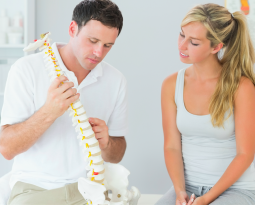
Posture Obstacles Preventing Proper Postural Design
We all know that having proper posture is a key component to obtaining an optimal level of health and wellness. However, have you ever found it difficult to keep your back straight for an extended period of time? Or do you find yourself slouching with your shoulders rotated forward? Changing your posture is not an easy task if you don’t know the proper method for doing so.
For effective posture habit re-education, it is important to identify common hidden obstacles in your daily activities that may be preventing you from having better posture.
1) Consider that your posture is a habit; bad postural habits render a weakened posture: Your posture, despite popular belief, is not dependent upon your age and genetics. Your posture has developed into the shape that it is today based upon your daily postural habits. To change your posture, therefore, you must change your habits that are creating bad posture.
Consider these common daily habits that are likely contributing to poor posture:
- A sedentary lifestyle with lack of exercise. The human body is a dynamic organism; your joints and muscles were designed to move! Postural rehabilitation exercises targeted at strengthening your postural muscles are key to improving posture.
- A non-ergonomically correct workspace. This is a common cause of unnecessary pressure and tension on the spine and the muscles that support the back. By organizing your workspace in an ergonomically efficient way, you can reduce daily stressors to your body and prevent work-related injuries.
- “Tech Neck” is the medical term for forward head posture from looking down at your phone for prolonged periods of time. This is a modern day epidemic. As smart phones get smarter, the populations’ posture gets weaker. How many hours a day do you spend looking down at your phone (or Ipad)? By raising your phone to eye level, this keeps a straight alignment of the spine, instead of looking down and creating an accentuated curvature of the dorsal spine.
2) Faulty Body Sense, not knowing where your body is in space can affect how you hold your body upright: The term proprioception refers to your perception of your body’s position in space. The research demonstrates that people who have postural distortions of their spine have decreased proprioception and an off balanced center of gravity. This means that you may be holding your body upright in a way that is less efficient, causing more strain to the joints, muscles, and spinal discs. For example, if your hips are unbalanced, or out of alignment, it will cause you to place more weight on one leg than the other. This causes increased fatigue for the muscles supporting more body weight and causes you to unevenly contract the muscles that surround your spine.
With time this can play a significant role in causing spinal degeneration and chronic irritation to the spinal discs. To improve your proprioception and balance, it is important to have a thorough postural analysis performed by a certified postural specialist.
To Improve Your Posture…
First identify what is negatively affecting your posture in your daily life, then make a plan to change these factors. Next, consider the importance of having a posture analysis performed to get an accurate evaluation of your balance and proprioception.
Remember, your posture won’t change itself; it requires mindful action for long-term improvements. You carry your posture with you everywhere you go, is your lifestyle supporting a healthy posture?













